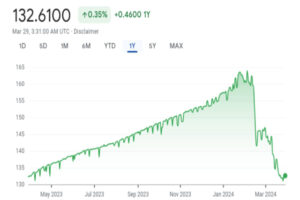Consolidation of scattered pension plans is a financial planning task that is done for the sake of peace of mind and comfort in retirement.
Scattered pension plans occur when an employee changes jobs, leaves the current employer’s pension scheme, and joins the new employer’s pension scheme. Such an employee will now be in two pension schemes, one with the former employer and the other with the new employer.
Several job changes can result in several pension plans, each with a former employer. Access to pension contributions before attaining the retirement age is restricted by law in most countries.
However, if an employee leaves employment and emigrates to another country without the intention of returning or becomes ill and incapacitated to the extent that retirement becomes necessary, the law in Kenya allows such an employee to access the total amount of the accrued Pension.
Why You Should Consolidate Your Scattered Pension Plans
Scattered pension plans increase the workload associated with monitoring and updating yourself on the status of your retirement savings. In extreme cases, it is possible to lose track and completely forget about some of your pension plans.
It is also common for pension schemes to completely lose contact with some of their members. This sequence leads to unclaimed retirement benefits. Not even a cent of your hard earned money should become a statistic of unclaimed retirement benefits.
Your current or former employers can also go under or wind up operations voluntarily after completing their mission. Without oversight from the sponsor, employee pension schemes remain orphaned under the care of pension fund managers and administrators. This is not the best investment environment for your retirement savings.
In Kenya, upon attaining the retirement age of 50 years for early retirement, or 60 years for normal retirement, 1/3 of your retirement savings are paid out to you as a lump sum, and the balance is paid out as the monthly pension or income draw-down. These payments have to be processed by the administrator of your pension scheme.
You have to visit your pension scheme administrator to process these payments. If your pension plans are scattered, you will have to make several trips to the offices of the administrators of your pension schemes to process these payments.
You will also be receiving multiple pension payments from your scattered pension plans each month, and tracking all of them to ensure that they have all been paid can be tiresome in your retirement.
All the problems presented by scattered pensions can also be inherited by your loved ones. Failing to pass your retirement savings to your loved ones because they remained unclaimed or leaving behind the hectic work of locating and following up on your scattered pension plans is not a good way to say goodbye.
Consolidation Of Your Pension Plans
Scattered pension plans can be consolidated into an Individual Personal Pension plan (IPP). An IPP is an individual retirement savings accumulation account that is regulated by the Retirement Benefits Authority (RBA).
The consolidation process entails opening an IPP account and transferring your deferred benefits from the occupational pension schemes sponsored by your former employers to your IPP.
Most pension fund managers in Kenya operate IPPs alongside their core business of offering fund management services to occupational pension schemes. IPPs are designed to be simple, flexible, and portable, and they are available to anyone seeking to accumulate retirement savings in an RBA-compliant savings plan.
Objectives of IPPs
IPPs are designed to achieve two main objectives:
- To provide plan holders with the opportunity to save regularly for guaranteed retirement income
- To enable former members of occupational pension schemes to transfer their deferred benefits to an RBA-regulated retirement plan that gives them control of their retirement planning while allowing them to continue making contributions to their retirement plan.
Types of IPPs
IPPs can be structured as pension or provident plans. The difference between the two is how retirement income is accessed from the plans.
Pension plan: 1/3 of the accumulated retirement savings are paid as a single lump sum, and the remaining 2/3 is paid as regular income for life upon retirement, or it can be withdrawn from the fund gradually in a minimum of 10 years.
Provident plan: The accumulated retirement savings are paid as a single lump sum upon retirement.
Key Features And Benefits of IPPs
- Registered With RBA and KRA: This double registration comes with tax benefits. The current maximum tax-deductible contribution is KES 20,000 per month or KES 240,000 per year. At the point of withdrawal, the law provides for a tax-free withdrawal benefit equal to KES 60,000 per year of membership up to a maximum of KES 600,000.
- Flexible contributions: Contributions can be fixed or varying; made monthly, quarterly, semi-annually, or annually
- Your Employer Can Also Participate: IPPs allow the employer of an IPP plan holder to also contribute to the employee’s retirement savings and enjoy tax relief on the same. The maximum tax-deductible limit is KES 20,000 per month or KES 240,000 per annum per person.
- IPPs Are Portable: The status of your IPP is not affected by changes in your employment. You can continue with the scheme after a change of employment and enjoy all the benefits of the scheme.
- Benefit Access: Subject to the prevailing regulations, you can terminate the plan and access your benefits at any time. However, it is advisable to wait until the retirement age to enjoy all the benefits accorded to a pension plan holder.
- Pension-Backed Mortgage: You can assign up to 60% of the accumulated retirement savings in your IPP towards financing the purchase or construction of a house.
The best IPPs schemes in the country invest plan holders’ contributions prudently to ensure high returns, and they can guarantee a minimum compound rate of return of up to 5% per annum. You owe yourself peace of mind and a comfortable retirement. Your trusted financial adviser can help you to consolidate your scattered retirement savings.






